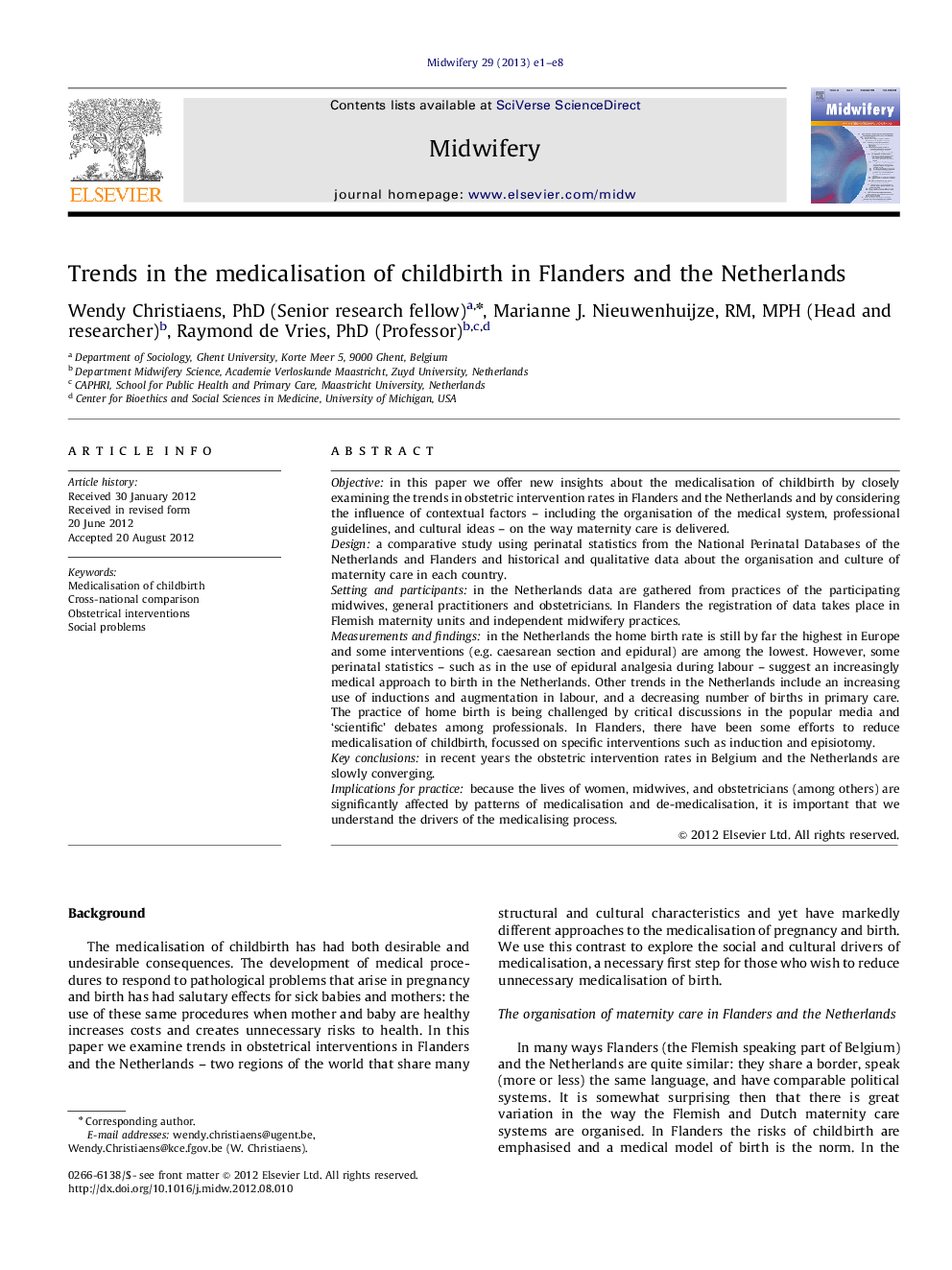| Article ID | Journal | Published Year | Pages | File Type |
|---|---|---|---|---|
| 1084960 | Midwifery | 2013 | 8 Pages |
Objectivein this paper we offer new insights about the medicalisation of childbirth by closely examining the trends in obstetric intervention rates in Flanders and the Netherlands and by considering the influence of contextual factors – including the organisation of the medical system, professional guidelines, and cultural ideas – on the way maternity care is delivered.Designa comparative study using perinatal statistics from the National Perinatal Databases of the Netherlands and Flanders and historical and qualitative data about the organisation and culture of maternity care in each country.Setting and participantsin the Netherlands data are gathered from practices of the participating midwives, general practitioners and obstetricians. In Flanders the registration of data takes place in Flemish maternity units and independent midwifery practices.Measurements and findingsin the Netherlands the home birth rate is still by far the highest in Europe and some interventions (e.g. caesarean section and epidural) are among the lowest. However, some perinatal statistics – such as in the use of epidural analgesia during labour – suggest an increasingly medical approach to birth in the Netherlands. Other trends in the Netherlands include an increasing use of inductions and augmentation in labour, and a decreasing number of births in primary care. The practice of home birth is being challenged by critical discussions in the popular media and ‘scientific’ debates among professionals. In Flanders, there have been some efforts to reduce medicalisation of childbirth, focussed on specific interventions such as induction and episiotomy.Key conclusionsin recent years the obstetric intervention rates in Belgium and the Netherlands are slowly converging.Implications for practicebecause the lives of women, midwives, and obstetricians (among others) are significantly affected by patterns of medicalisation and de-medicalisation, it is important that we understand the drivers of the medicalising process.
